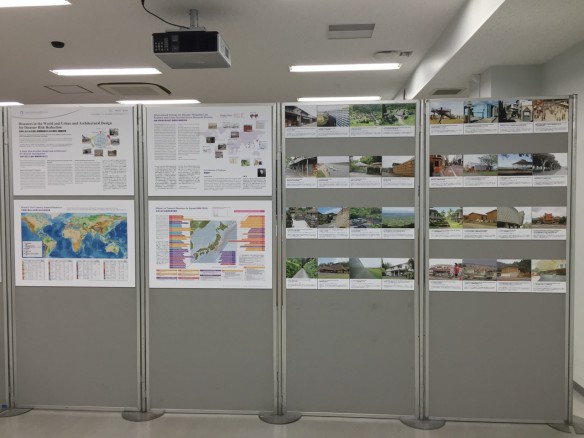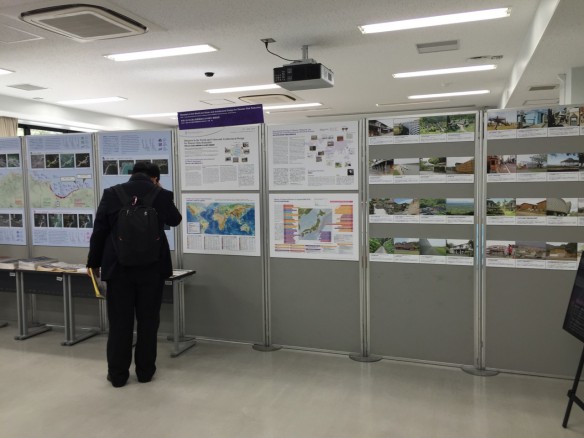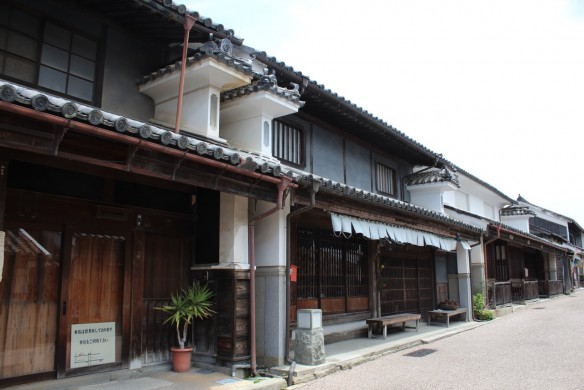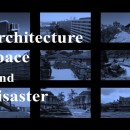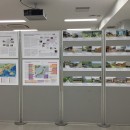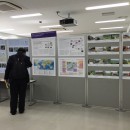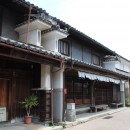ID:221 Disasters in the World and Urban and Architectural Design for Disaster Risk Reduction
- Date
- 2015.3.14-18
- Venue
- Tohoku University Kawauchi-kita Campus A102
- Time
- 10:00-20:00
Inquiry
E-mail:murao*irides.tohoku.ac.jp (Please replace * to @)
Organization
Tohoku University International Research Institute of Disaster Science (IRIDeS)
Tags
Report
| Number of participants | 100 |
|---|
At this exhibition, we introduced various disasters occurred in the world and case studies of urban and architectural design disaster risk reduction.
Meanings of physical environment at each stage are respectively explained from the viewpoint of disaster management. The scheme of the relationship between spatial elements and Disaster Life Cycle is demonstrated.
1. Physical Environment for Mitigation:
Basically, there are two types of manner, structural mitigation and land-use mitigation, to mitigate disasters. The former manner includes 1) earthquake-resistant design, 2) fireproof design not to break out fire ore not to spread fire around, 3) stilted houses to reduce damage due to floods, 4) seawall or levee to protect a coast, harbor, or riverside from the force of waves or flood, and 5) rock wall stone walls and heavy roof to prevent damage due to strong wind and salt from the ocean. In the other hand, the latter is exercised to avoid disaster by means of living far away from disaster prone area.
2. Physical Environment for Preparedness and Response:
Looked at from the spatial point of view, it is not easy to distinguish between Preparedness and Response. Because, making place for activity to quickly respond after the disasters should be prepared before disasters. Shirahige Higashi Disaster Prevention Base might be an exponent of the space for preparedness and response. Apart from the urban complex, you can see several small parks, so-called pocket parks, in Tokyo. Those were developed to respond mainly by residents after disasters in congested areas. Udatsu, one of architectural vocabulary in Japan, was traditional installed to avoid fire spread to neighbors. Also, Tsunami evacuation buildings set in coastal areas in Japan can be classified in the category.
3. Physical Environment for Recovery:
Recovery phase is related to several individual/public activities to support victims and affected governments. Most relevant space to the phase for the affected is shown in temporary shelters/housings and permanent housings. In addition to the architectural elements of those houses, urban recovery aspects are indispensable for catastrophically damaged cities. In fact, most places to describe present Tokyo were developed based on the recovery planning after 1923 Great Kanto Earthquake and the aerial bombardment in 1945: Some of the open spaces were constructed using those debris. Facilities for disaster memorial, which might be established after disaster, are architecturally connected with concept of disaster recovery.
Other than above, a map indicated the fifty worst disasters between 2001 and April 2014 was exhibited. The map showed the disaster categorized into five types, earthquake, windstorm & flood, drought, heat wave and extreme winter conditions.



